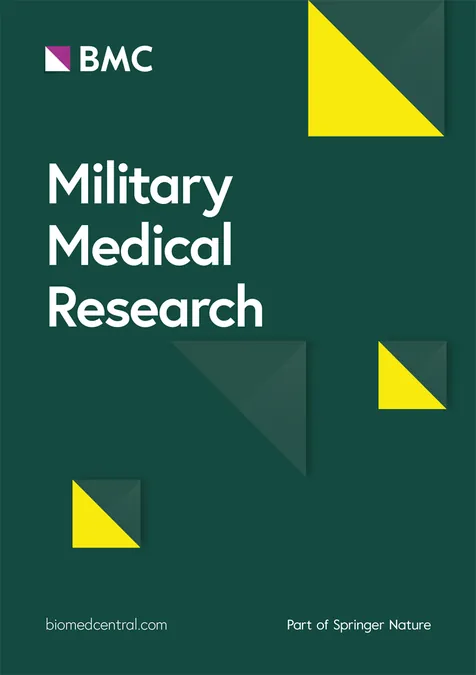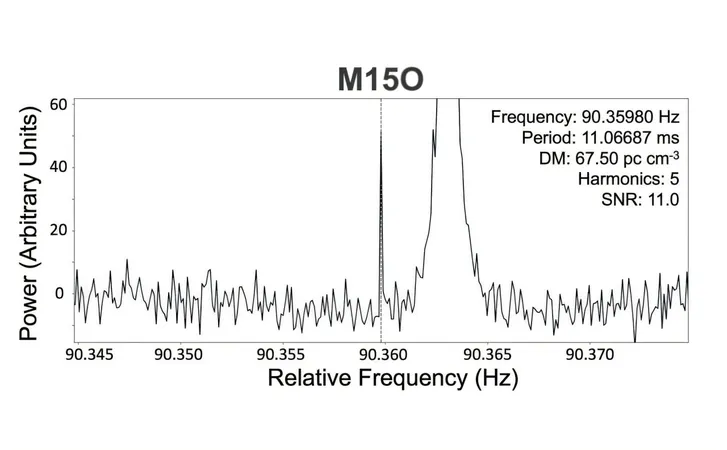
Reviving Hope: A Study on Psychological Recovery Resources for Military Personnel with PTSD
2025-04-09
Author: Ming
Introduction
Post-traumatic stress disorder (PTSD) represents a significant challenge for military personnel, with prevalence rates in veterans ranging from 1% to an alarming 35%, eclipsing rates found in the general population. An emerging beacon of hope in combatting this debilitating condition lies in the cultivation of psychological resources, particularly the power of hope. This article explores an innovative intervention aimed at enhancing these resources in veterans suffering from PTSD.
The Importance of Hope
Hope is both a trait and a state, playing a crucial role in bolstering well-being and resilience. Research indicates that individuals who possess higher levels of hope experience fewer PTSD symptoms, effectively using hope as a buffer against the impacts of trauma. The Adult Dispositional Hope Scale (ADHS) is a critical tool that measures hope, examining two components: agency—goal-directed energy—and pathways—the strategies developed to achieve those goals.
Efficacy of Hope-Centered Interventions
Empirical studies have confirmed the efficacy of hope-centered interventions to alleviate PTSD symptoms while enhancing psychological functioning. By encouraging trauma survivors to set meaningful, attainable goals, these programs instill a sense of direction and purpose vital for recovery. A focus on agency allows individuals to take charge of their healing process, while fostering multiple strategies for success (pathways thinking) cultivates a sense of control.
The CREBAT Program
The current investigation primarily aimed to evaluate the impact of the Centre de Ressources des Blessés de l’Armée de Terre (CREBAT) program, initiated by the French Army to aid soldiers recovering from trauma. This intensive one-week program consists of group workshops, physical activities, and reflective exercises tailored to enhance resilience and psychological recovery.
Study Methodology
In our study, we analyzed a sample of 42 veterans (41 men and 1 woman; ages 22 to 51) enrolled in the CREBAT course, employing various assessment tools such as the Post-Traumatic Stress Disorder Checklist for DSM-5, ADHS, and several scales measuring self-esteem, positive mental health (PMH), and well-being.
Results
Results disclosed notable enhancements across all areas: self-esteem saw an increase, with scores rising from an average of 26.29 to 27.60; PMH improved dramatically from 25.14 to 34.60; and well-being also experienced significant growth, climbing from 40.83 to 48.86. Such findings reflect the potency of the CREBAT intervention in shifting crucial psychological resources.
Profiles of PTSD and Hope
Further analysis uncovered three distinct profiles categorized by PTSD severity and hope levels: those characterized by high PTSD and low hope, low PTSD and high hope, and a mixed group with intermediate levels. Notably, participants with the highest PTSD severity and lowest hope experienced the most marked improvements in self-esteem and PMH, underscoring the importance of attending to individual psychological characteristics in therapeutic contexts.
Limitations and Future Research
Despite these encouraging results, it’s vital to note that improvements in psychological resources did not translate into observable differences in successful reintegration outcomes among the various profiles. This suggests that the interplay between psychological enhancement and reintegration may involve myriad external factors requiring deeper investigation. Potential limitations of the study include a small and predominantly male sample, reliance on self-reported measures, and lack of follow-up assessments on PTSD severity. Future research should expand the sample size, incorporate a diverse gender representation, and explore behavioral indicators for a more comprehensive understanding of recovery dynamics.
Conclusion
In conclusion, our findings advocate for the integration of hope-enhancing strategies within rehabilitation programs for veterans with PTSD. By tailoring interventions based on individual profiles of hope and PTSD severity, we can initiate more effective recovery paths. This research not only highlights the importance of psychological resources in the healing process but also encourages the exploration of additional external factors that influence successful reintegration into civilian life.
These insights pave the way for the development of personalized interventions, promising to improve the overall psychosocial and professional reintegration outcomes for veterans battling PTSD.


 Brasil (PT)
Brasil (PT)
 Canada (EN)
Canada (EN)
 Chile (ES)
Chile (ES)
 Česko (CS)
Česko (CS)
 대한민국 (KO)
대한민국 (KO)
 España (ES)
España (ES)
 France (FR)
France (FR)
 Hong Kong (EN)
Hong Kong (EN)
 Italia (IT)
Italia (IT)
 日本 (JA)
日本 (JA)
 Magyarország (HU)
Magyarország (HU)
 Norge (NO)
Norge (NO)
 Polska (PL)
Polska (PL)
 Schweiz (DE)
Schweiz (DE)
 Singapore (EN)
Singapore (EN)
 Sverige (SV)
Sverige (SV)
 Suomi (FI)
Suomi (FI)
 Türkiye (TR)
Türkiye (TR)
 الإمارات العربية المتحدة (AR)
الإمارات العربية المتحدة (AR)